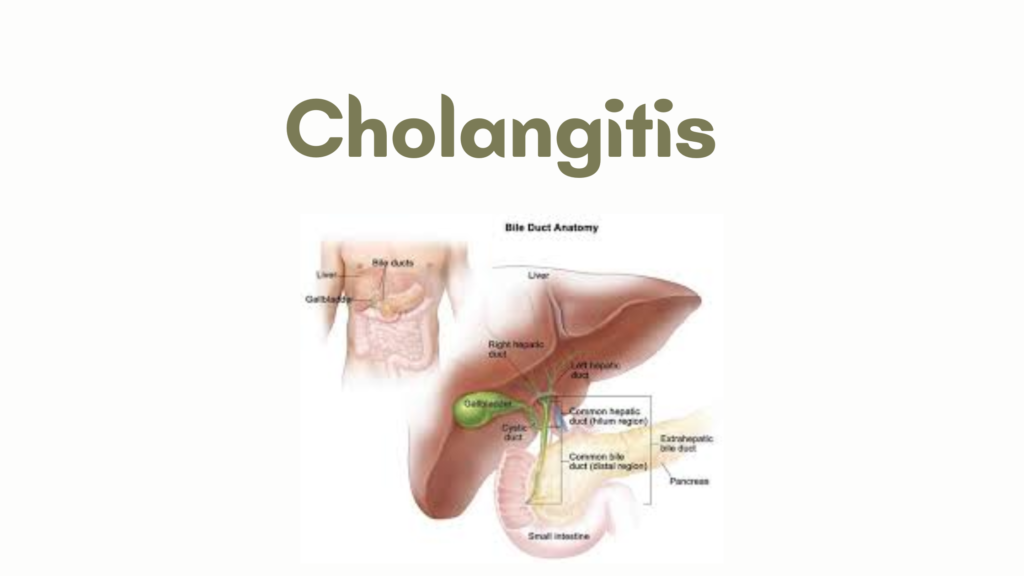Cholangitis is a bacterial infection of the biliary tree, typically due to bile duct obstruction, often from gallstones, but also from strictures, tumors, or stents. It is a life-threatening condition if not treated promptly.
🔍 Pathophysiology
- Obstruction of the common bile duct (CBD) (e.g., by gallstones)
- Leads to bile stasis, which promotes bacterial overgrowth
- Bacteria (commonly E. coli, Klebsiella, Enterococcus) ascend from the duodenum
- Results in biliary tract infection and inflammation
⚠️ Classic Symptoms – Charcot’s Triad
- Fever (with chills)
- Right upper quadrant abdominal pain
- Jaundice
Reynolds’ Pentad (suggests severe cholangitis with sepsis):
- Charcot’s Triad plus:
4. Hypotension
5. Altered mental status
🧪 Diagnosis
- Labs:
- Elevated WBC count
- Elevated liver enzymes: ALT, AST
- High bilirubin and alkaline phosphatase (ALP)
- Imaging:
- Ultrasound: May show bile duct dilation or gallstones
- MRCP: Non-invasive imaging of the biliary tree
- CT scan: Can detect complications or abscess
- ERCP: Diagnostic and therapeutic
💊 Treatment
- Stabilize the patient:
- IV fluids
- Broad-spectrum IV antibiotics covering Gram-negative and anaerobic bacteria (e.g., piperacillin-tazobactam, ceftriaxone + metronidazole)
- Biliary decompression (urgent if severe):
- ERCP: First-line treatment for ductal stone removal and drainage
- Percutaneous transhepatic cholangiography (PTC): Alternative if ERCP is not possible
- Surgical decompression: Rare, reserved for cases where endoscopic or percutaneous approaches fail
- Definitive treatment:
- Cholecystectomy once the acute episode resolves (if gallstones were the cause)
🚨 Complications
- Sepsis and septic shock
- Liver abscess
- Acute kidney injury
- Death, especially if not treated promptly
